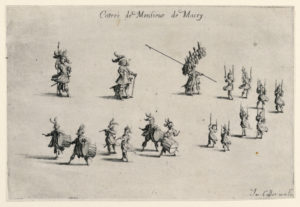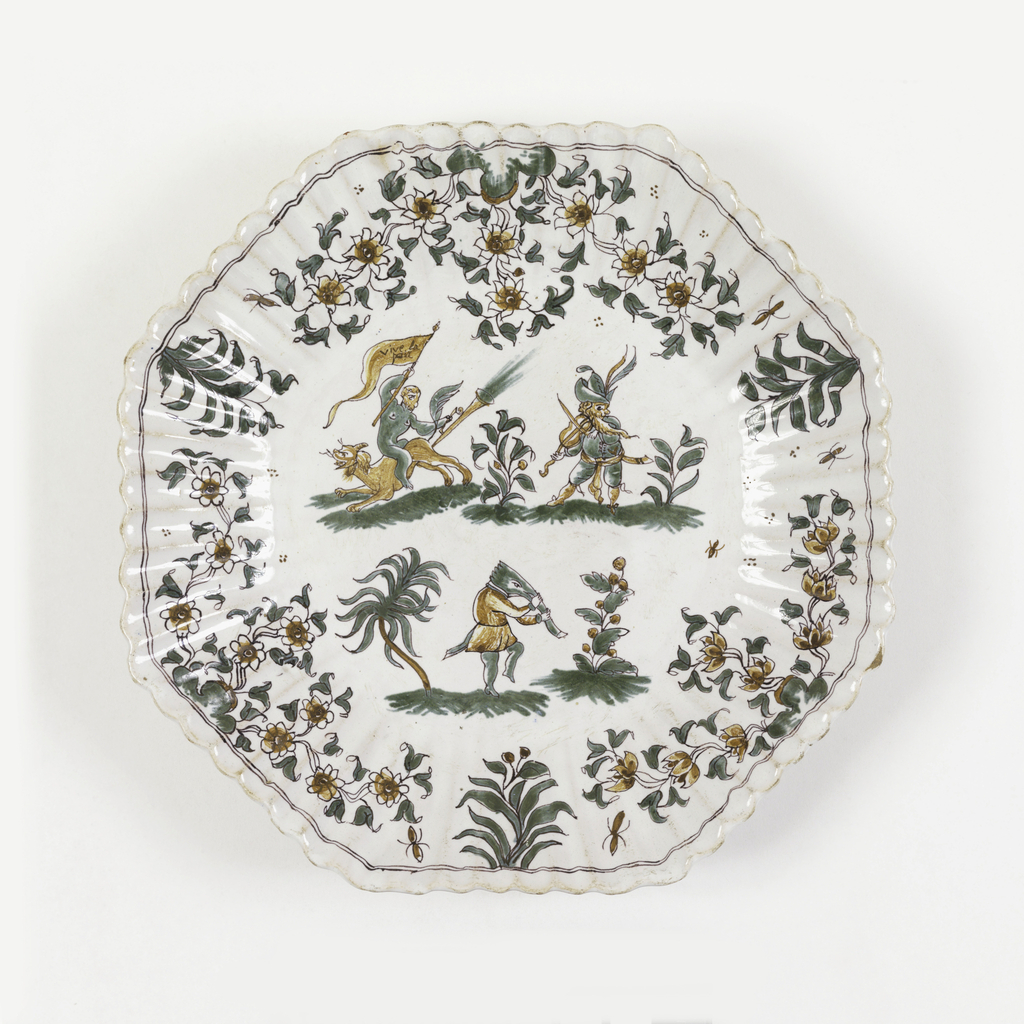This Object of the Day celebrates one of many treasured objects given by Clare and Eugene V. Thaw to Cooper Hewitt, Smithsonian Design Museum. It is published here in memory of Eugene V. Thaw. Click on this link to read more about the Thaws and their gifts to Cooper Hewitt.
The so-called “grotesque” style of decoration developed at the Olérys factory has since become synonymous with the faience industry in the town of Moustiers, France. The motif is composed of musicians and fanciful figures on staggered terraces, arranged without concern for perspective or narrative. Generally surrounded by flowering vegetation and insects, these figures are grotesque in the common sense of the word, meaning ‘exaggerated caricatures’. Factory decorators freely adapted printed sources without slavishly copying designs. The lighthearted figures of musicians and dancers that appear on many Moustiers plates are in the style of the French artist Jacques Callot (1592 —1635), whose etchings of musicians and gobbi (hunchbacks) were widely known. A Callot print in the Cooper Hewitt’s collection depicts a band of marching musicians whose feathered caps curl jauntily in the wind, a detail echoed by many Olérys figures. On the table, these painted characters served to entertain and delight diners.

Print, Entrée de Monsieur de Macey (Entrance of the Monsieur de Macey), from Le Combat à la Barrière (Combat at the Barrier), 1627; Museum purchase through gift of Jacob Schiff; 1946-36-6
Rebekah Pollock is a design historian specializing in ceramics and 18th-century print culture. She was a formerly an MA fellow in the department of Drawings, Prints and Graphic Design at Cooper Hewitt, Smithsonian Design Museum.
This plate is currently on view in Moustiers Ceramics: Gifts from the Eugene V. and Clare E. Thaw Collection at Cooper Hewitt through April 29, 2018.
